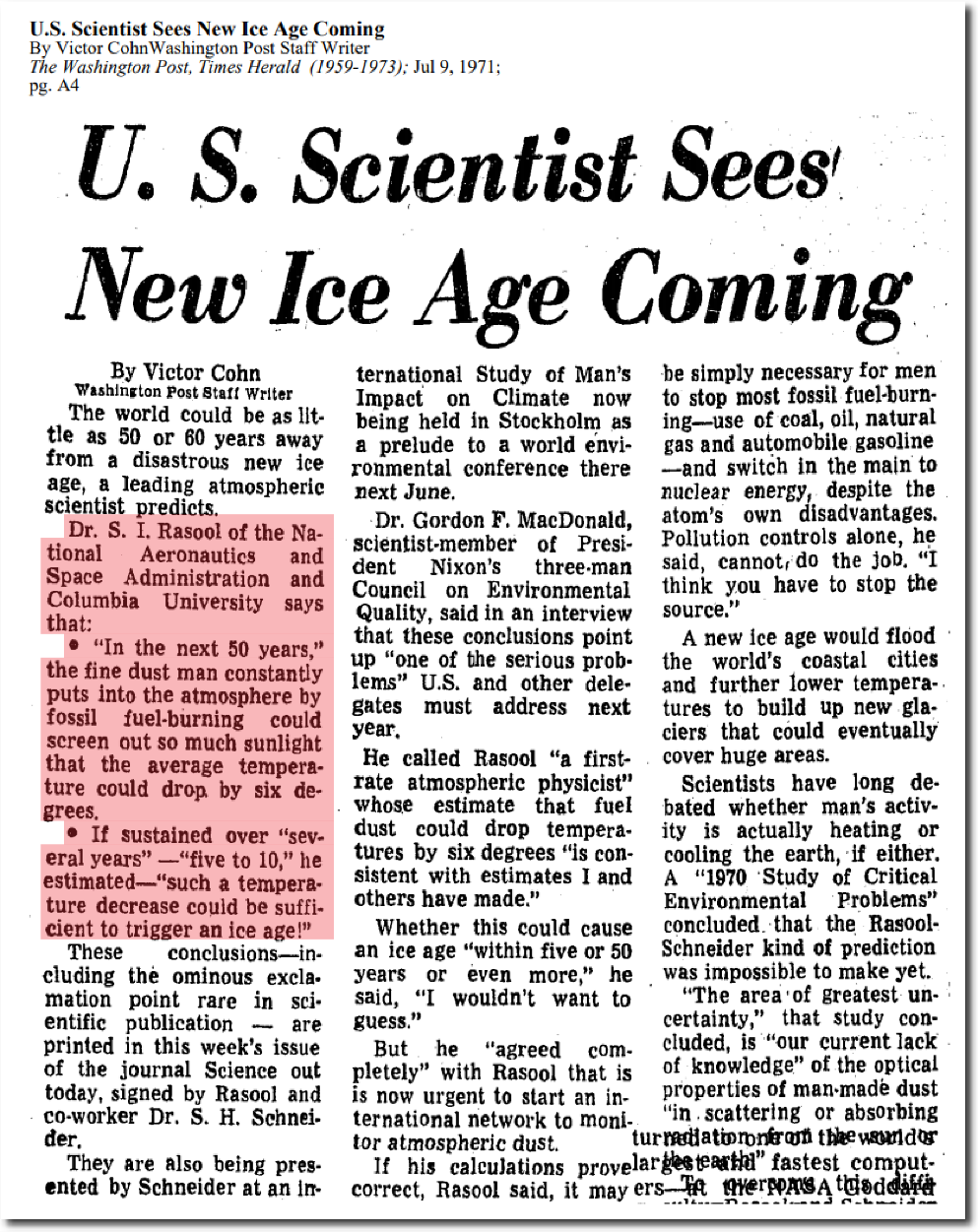smh said:
https://www.theguardian.com/environment/2020/feb/15/worst-case-scenario-2050-climate-crisis-future-we-choose-christiana-figueres-tom-rivett-carnac
terrible terrible stuff, of course, but hardly anyone living in 2020 cares (enuf).
give thanks to Oski if you dint reproduce. just one snip, of many..
Quote:
Food production swings wildly from month to month, season to season, depending on where you live. More people are starving than ever before. Climate zones have shifted, so some new areas have become available for agriculture (Alaska, the Arctic), while others have dried up (Mexico, California). Still others are unstable because of the extreme heat, never mind flooding, wildfire and tornadoes. This makes the food supply in general highly unpredictable. Global trade has slowed as countries seek to hold on to their own resources.. .. ..
The author is not a scientist, she is a UN policy maker and an anthropologist. This article is pure alarmist unscientific propaganda. You can pull out a lot of articles like these from 30 years ago that claimed that the world would face apocalyptic climate cataclysms today.
I'm just going to debunk the two items you've pulled out. SMH you are like me a Cal STEM grad so you will have no problem following my points, and I welcome your counterpoints as you're a solid poster and a bona fide good guy I've had the pleasure of meeting.
OK, first point: the world is awash in food, even as demand for food has been growing at a fast rate due to (a) population growth and (b) the explosive growth in the middle classes in BRICS and the rest of the developing world. We have already reached peak farmland at the global scale, because yields have been going up steadily, we are getting more wheat, rice, corn out per acre than ever before, on less and less land. Total farmland is peaking now at 5 billion acres.
Quote:
OSLO (Reuters) - The amount of land needed to grow crops worldwide is at a peak, and a geographical area more than twice the size of France will be able to return to its natural state by 2060 as a result of rising yields and slower population growth, a group of experts said on Monday.
Their report, conflicting with United Nations studies that say more cropland will be needed in coming decades to avert hunger and price spikes as the world population rises above 7 billion, said humanity had reached what it called "Peak Farmland".
More crops for use as biofuels and increased meat consumption in emerging economies such as China and India, demanding more cropland to feed livestock, would not offset a fall from the peak driven by improved yields, it calculated.
If the report is accurate, the land freed up from crop farming would be some 10 percent of what is currently in use - equivalent to 2.5 times the size of France, Europe's biggest country bar Russia, or more than all the arable land now utilized in China.
"We believe that humanity has reached Peak Farmland, and that a large net global restoration of land to nature is ready to begin," said Jesse Ausubel, director of the Program for the Human Environment at the Rockefeller University in New York.
"Happily, the cause is not exhaustion of arable land, as many had feared, but rather moderation of population and tastes and ingenuity of farmers," he wrote in a speech about the study he led in the journal Population and Development Review.
https://www.reuters.com/article/us-crops/peak-farmland-is-here-crop-area-to-diminish-study-idUSBRE8BG0QH20121217This is what the phenomenon looks like for corn:

Note that there is a parallel phenomenon in consumer goods, for example:

That's the reason we're never going to run out of resources, oil and coal included:
 https://hackernoon.com/welcome-to-peak-stuff-e699820c7e9b
https://hackernoon.com/welcome-to-peak-stuff-e699820c7e9bBut to go back to food production, one of the main reasons yields have been going up so much is that CO2 levels have been going up. CO2 is a very powerful plant fertilizer, greenhouse operators will nearly double their plant yields by pumping CO2 up above 1,000ppm, that's why every greenhouse farmer will do this.



Rising CO2 levels have resulted in what's known as
CO2 greening, or the worldwide increase in green cover due to rising CO2 levels:
 https://phys.org/news/2013-07-greening-co2.html
https://phys.org/news/2013-07-greening-co2.htmlAs shown on this map, the CO2 greening is most dramatic in arid areas like the African sub-Saharan Sahel and western India and Australia, because plants need fewer stomata for photosynthesis when CO2 is higher, thus they will lose less water in the photosynthesis process. Hence less water is needed to grow plants when CO2 is higher.
Another point that the alarmists ignore when freaking out about crop disasters is that warmer temperatures worldwide will result in bigger crops, especially in the wheat and corn belts. A lot of the wheat production is grown in northern countries like Canada, Russia and Ukraine, those crops are much more vulnerable to cooler weather, especially cold snaps in late Spring and early Summer.
Bottom line: there is absolutely no evidence that we will run out of food in 2050 or that food production will be seriously disrupted in the near future. There has been a steady rise in world food production matching the rise in demand, no food shortages observed, and there is still a lot of land available in regions like Africa or Russia to increase production in case crops fail.











 ][/url]on [manmade global warming], 97.1% endorsed the consensus position that humans are causing global warming." But Cook's assertion has been heavily criticized by researchers carefully examining his methodology.
][/url]on [manmade global warming], 97.1% endorsed the consensus position that humans are causing global warming." But Cook's assertion has been heavily criticized by researchers carefully examining his methodology.


